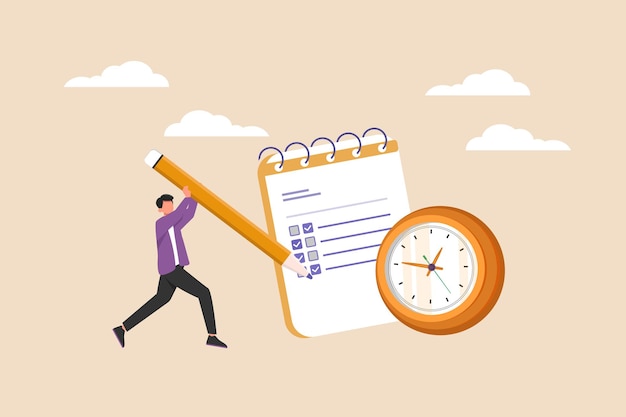Do you get a thrill from crossing off completed items on your to-do list? Or do you cringe when you open your planner and see so many unchecked boxes? Are tasks always getting pushed to tomorrow, because you never have time to plan for them today? If that sounds like you, this article is for you! Creating and sticking to a system will help keep your lists organized and sane. Having a system in place will also keep your tasks accountable. There’s nothing more frustrating than seeing an unchecked box somewhere on your list—so let’s get into the nitty-gritty details of how we can make planning ahead easier.
Start with a blank page
When you sit down to plan ahead for the week or month ahead, start with a fresh sheet of paper. Don’t use a page that’s already filled with previous failed plans and failed attempts to stay organized. Starting fresh will help you create a game plan that you can actually follow through with. Your previous plans may have failed because they weren’t realistic enough, or they were set up in such a way that they were too difficult to keep up with. You may have also created plans that were too specific—meaning that you wrote down tasks like “finish article,” but didn’t give yourself a due date. Or you may have written down tasks that were too general, like “work on articles.”
Make a habit of planning
If you’re just starting out and you’ve never been one to regularly plan your tasks and appointments, it may be a good idea to try out a few different types of planning before you decide on the one you’d like to use going forward. This can help you better find the type and style of planning that works best for you, as well as help you get into the habit of planning regularly. Once you’ve found the type of planning that works best for you, try to make a habit of regularly scheduling in planning time. Try planning a specific time each week to sit down and go over your upcoming week or month. Or try planning a specific time each day to look over your daily to-do list.
Pick your priority tasks and set due dates
Once you’ve got your list ready to go, it’s time to start scheduling tasks. If you’re using an online planner or to-do list, you can pick a due date for each task. If you’re using an old-school planner, you can write in a specific date or mark off a day of the week. When scheduling tasks and appointments, it’s a good idea to pick your priority tasks and mark those with a due date. This will help keep those tasks from getting pushed off and forgotten about. These are the tasks that you really need to knock out in order to succeed in your career, your business, or your day-to-day life. These are your daily, weekly, and monthly tasks that keep your life running smoothly.
Add in built-in times for checking off tasks
Many people set up a daily to-do list. If you’re one of those people, make sure to include built-in times to check off tasks throughout your day. If you’re not much of a daily list person, try setting up specific times to sit down and work through your to-do list. For example, you might decide to spend 30 minutes every evening reviewing your to-do list and crossing off completed tasks. Or you might decide to spend 30 minutes on Sunday reviewing your to-do list for the week. Or you might decide to spend 30 minutes on Friday reviewing your to-do list for the weekend. The point is, you need to make time for checking off completed tasks.
Check for balance with your to-do list
As you create and check off your to-do list, check for balance. If you notice that you have a lot of appointments and meetings on your schedule but not a lot of time set aside for work, try adding in a few more work-related tasks. Similarly, if you notice that you have a lot of work-related tasks but not enough time to enjoy your personal life, try adding in a few appointments and social events. Your to-do list should be a balance of work and your personal life. Every task on your list doesn’t need to pertain to work, and every task on your list doesn’t need to be related to a specific date or appointment. But your to-do list should include both.
Conclusion
Keeping your to-do lists organized and up to date will help you feel more accomplished and keep stress levels down. Once you get into the habit of regularly planning your time and creating checklists for your tasks, you’ll wonder how you ever lived without them. It’s important to remember that creating a to-do list and sticking to it doesn’t mean you have to tackle everything on your list in one sitting. It just means that once your list is in place, you need to keep working through it until it’s finished!

